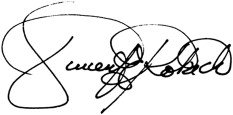I can remember when some instructors in my orthodontic residency spoke fondly about their private practices in the “old days.” They recalled having only 1 or 2 treatment chairs, a receptionist who doubled as an assistant, an office that was less than 1000 square feet, and a total number of active patients that was somewhere around 100. As residents, we thought this was absurd. Why would anyone practice like this?
Obviously, 1 reason for this style of practice was that in the “old days” orthodontic appliances were hand-made at the chair. Those were the days of “pinched bands,” which were made from stock band material. The orthodontist soldered the brackets to the bands and eventually cemented the appliance to the patient’s teeth. Sounds time consuming, but if you treated only 20 to 25 patients in a day, there was enough time to accomplish what needed to be done. Although this practice model certainly sounds ancient and unpalatable to most of us today, there were 2 benefits of it: a ridiculously low overhead and an equally ridiculously long waiting list of future patients who would have to wait months for an examination. The net result was that most old-timers netted a comfortable income from their practices.
Times have certainly changed, haven’t they? The first big change came with premade orthodontic bands. They allowed orthodontists to streamline the fitting of the appliance; as a result, they could see more patients. Time to add another chair and another assistant. Then the acid-etch technique was developed. With this major change in attaching the appliance, clinicians could eliminate the step of fitting bands and simply bond brackets to teeth. This technique also allowed orthodontists to streamline their practices and see more patients. Time to add another chair and another assistant.
Of course, when you do not have to fit band material between each tooth contact, it is possible to treat a marginal arch-length deficiency without tooth extractions. Nonextraction therapy reduced treatment times, so orthodontists could see more patients. Time to add another chair and another assistant.
Then nickel-titanium archwires were developed; they eliminated the time-consuming task of bending loops. Flexible archwires allowed assistants to place the wires, so the orthodontist only had to check them after placement. This technical advancement made orthodontists more efficient, so they could see more patients. Time to add another chair and another assistant.
And today, we have computers that can place brackets indirectly on scanned dental casts and robots that can bend archwires. So the orthodontist’s chair time can be reduced even further, permitting even more patients to be seen. Time to add another chair and another assistant.
Whereas the old practice model had 1 or 2 chairs and a receptionist who occasionally served as an orthodontic assistant, now most practices have a minimum of 5 or 6 chairs, and some have as many as 10 or more. In addition, the days of the orthodontic practice with 1 or 2 employees are over. Some practices have 15 to 20 employees for 1 orthodontist. The new practice model has certainly allowed orthodontists to treat more patients. But what are the downside effects?
How many of you would answer yes to the following questions? Do you currently keep all of your treatment chairs filled each day? Do you really need all the staff members whom you employ? Is your waiting list longer today than it was 2 or 3 years ago? Are you netting more income from your practice today than 5 years ago? Is your overhead higher than it was 5 years ago? Are you happy with the direction that the modern practice model has taken our orthodontic specialty? If you answered yes to all of these questions, I believe that you are in the minority.
If orthodontists today practiced in offices with 3 or 4 treatment chairs and 3 or 4 employees, then perhaps we could all achieve the 3 keys to business success that our predecessors consistently maintained: a lower overhead, a higher net income, and a longer waiting list. So I ask you, what was wrong with the old practice model?





